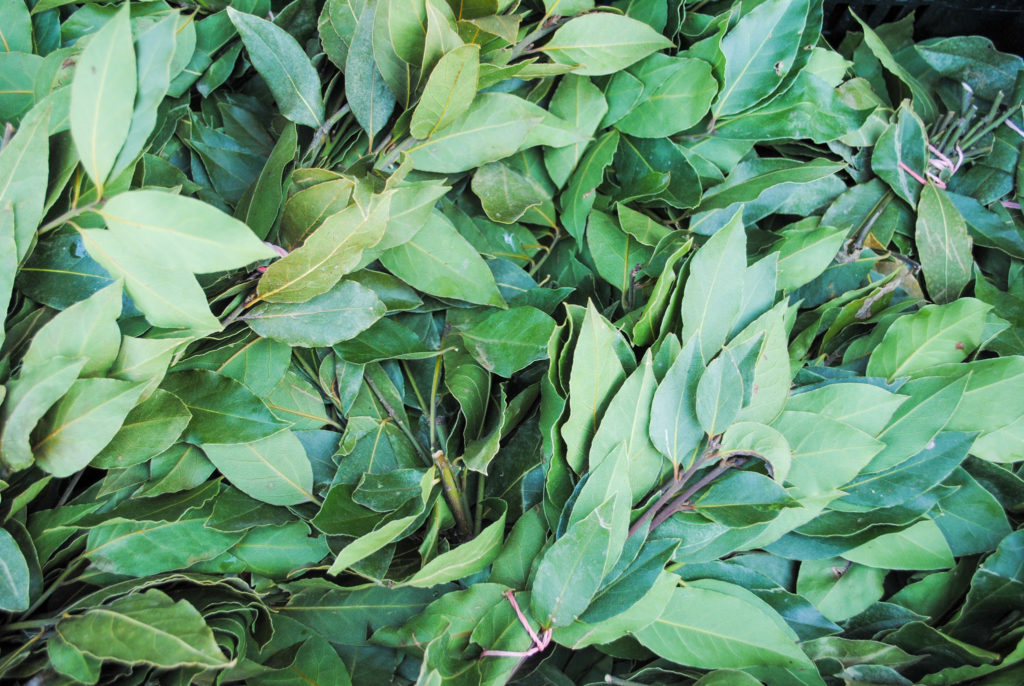Bay leaves

The aromatic leaves of the bay laurel tree have a flavor similar to oregano and thyme. One of the few herbs that doesn’t lose its flavor, bay leaves can be used either fresh or dried, adding an herbal and slightly floral note to a wide range of dishes. Most often an ingredient in soups and stews, the full flavor and fragrance of the bay leaf is best articulated in dishes that require longer cooking times. While bay leaves are often used whole, most recipes suggest discarding them from dishes before serving, as they can often be bitter and difficult to chew. While bay leaves compliment many dishes on their own, they are often bundled with parsley and thyme in what?s known as ?bouquet garni,? a bundle of herbs commonly called for in French recipes, and added to soups, stocks, and stews.
Dating back to roughly 500 BC, bay leaves are rich in symbolism as well as flavor. In Ancient Greece and Rome, for example, the bay leaf was held in such high esteem that laurel garlands were bestowed upon those who excelled in sports and academics as a symbol of honor. It is from this tradition that the terms ?baccalaureate? and ?poet laureate? were derived.
